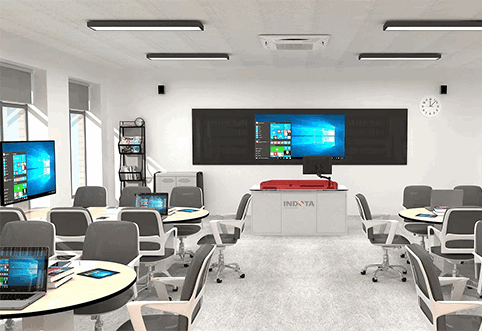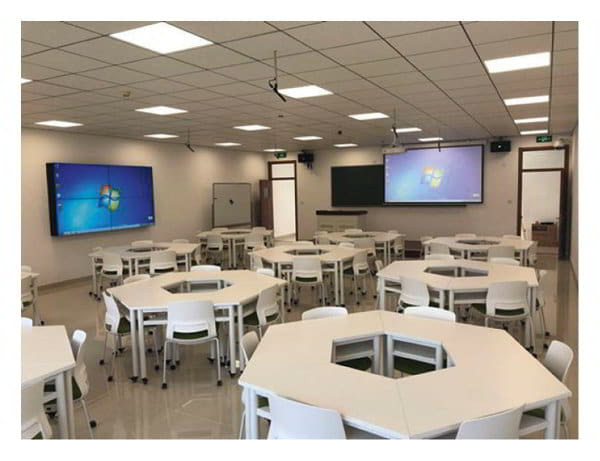Introducing Power of Next Generation
- Shrishti Complex, Zone-1, M.P. Nagar, Bhopal
- bgaur@latestgroup.in, rsinghgaur@latestgroup.in

Smart classroom solutions
Smart Classroom Solutions refer to the integration of technology and digital tools to enhance the teaching and learning experience in educational environments. These solutions transform traditional classrooms
Key Features:
- Interactive Whiteboards: Digital boards allow teachers to present multimedia lessons, interact with content, and engage students with visual and interactive elements.
- Digital Content and e-Textbooks: Smart classrooms provide access to online textbooks, multimedia presentations, and educational software, promoting an interactive and self-paced learning experience.
- Projectors and Visualizers: High-definition projectors and visualizers are used to display presentations, videos, and other educational content, enhancing visual learning.
- Audio Systems: Integrated audio systems ensure that the teacher’s voice is clearly heard by all students, improving communication and engagement.
- Classroom Management Software: Teachers can monitor and manage students’ activities through specialized software, which helps in maintaining focus and monitoring progress.
- Cloud-based Platforms: Cloud storage allows teachers and students to access study materials, assignments, and grades from anywhere, promoting collaboration and flexibility in learning.
- Student Response Systems: These systems allow students to respond to quizzes or polls during class, providing immediate feedback and increasing engagement.
- Learning Management Systems (LMS): LMS platforms integrate assignments, resources, assessments, and communication tools, providing a streamlined educational experience.
Improved Engagement:
Visual and interactive content helps capture students' attention and makes learning more enjoyable.

- Personalized Learning
- Digital platforms enable students to learn at their own pace, with adaptive learning technologies catering to individual needs.
Collaboration
Smart classrooms foster collaboration through group activities, interactive projects, and online discussions.
- Real-time Feedback: Teachers can instantly assess student performance and provide immediate feedback, improving the learning process.
- Sustainability: By reducing the use of paper and physical resources, smart classrooms contribute to an eco-friendly environment.
